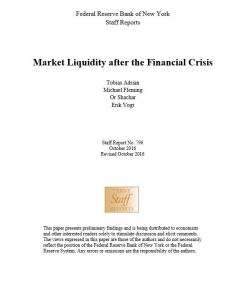Join getAbstract to access the summary!

Join getAbstract to access the summary!
Tobias Adrian, Michael Fleming, Or Shachar and Erik Vogt
Market Liquidity after the Financial Crisis
Federal Reserve Bank of New York, 2016
What's inside?
Regulation’s effects on market liquidity appear to be minimal, according to new research.
Recommendation
The 2008 financial crisis drained liquidity from the financial system. In subsequent years, regulators attempted to address future systemic risk contagion through a stronger regulatory apparatus, but some say that those actions may have had unintended adverse consequences on market liquidity. Economists Tobias Adrian, Michael Fleming, Or Shachar and Erik Vogt analyze the impact of regulation on liquidity access, price and risk in corporate and Treasury bonds, and their results upend some widely held beliefs. getAbstract suggests their detailed but informative work on liquidity in fixed income markets to investors and executives.
Summary
About the Authors
Tobias Adrian is an economist at the International Monetary Fund. Michael Fleming, Or Shachar and Erik Vogt are economists at the New York Federal Reserve Bank.





















Comment on this summary